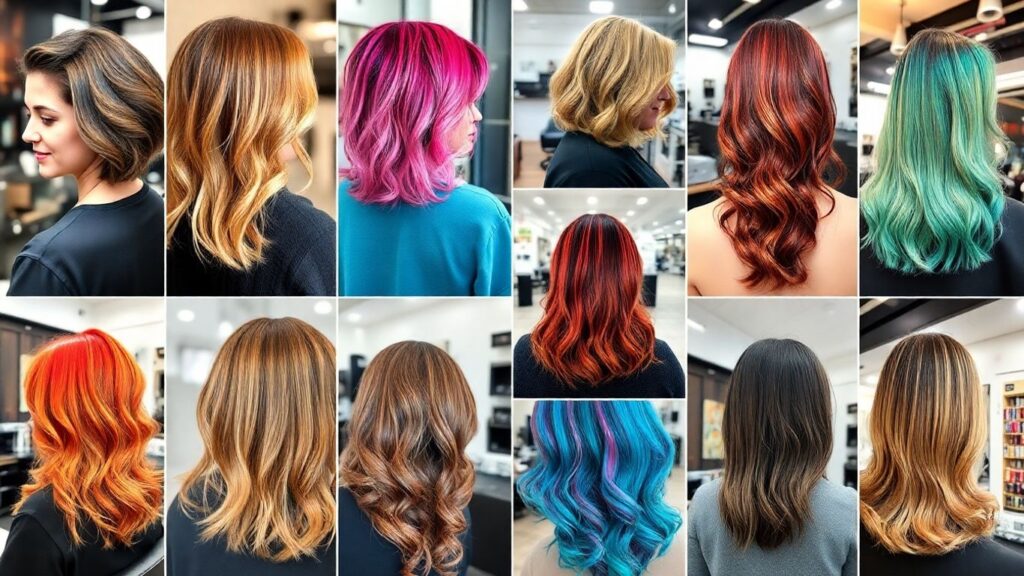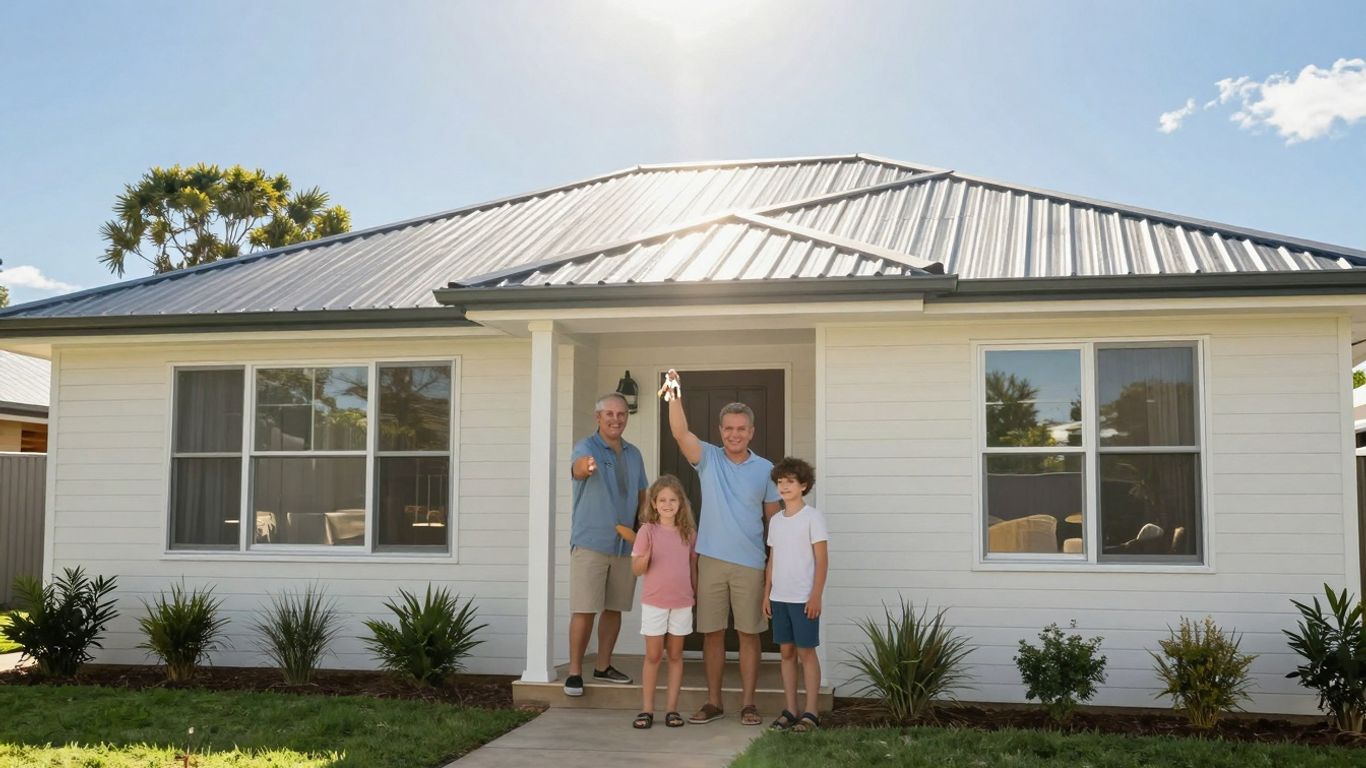Thinking about getting a haircut or maybe a whole new look? Australia’s got a heap of hairdressing places, from big names you see everywhere to little local spots. It’s a pretty busy industry, and understanding how it all works can be a bit much. We’ll break down some of the main hairdresser chains australia has to offer and what makes them tick.
Key Takeaways
- The hair and beauty industry in Australia is a big deal, bringing in billions each year, showing people really care about how they look.
- Big hairdresser chains like Hairhouse and Just Cuts have different ways of doing business, combining services with retail or focusing on quick, easy cuts.
- Choosing between an independent salon, a franchise, or a specialty place depends on what you want – freedom, brand backing, or a specific skill.
- Buying a hair salon can cost anywhere from $30,000 for a small place to over $1 million for a fancy, high-earning one, with profitability boosted by good service and smart business.
- The industry faces challenges like finding good staff and dealing with rent costs, but focusing on special services and using technology can help salons stay successful.
Understanding the Australian Hairdresser Chains Landscape
The hair and beauty industry in Australia is a pretty big deal, raking in over $5 billion each year. It’s not just about looking good; it’s a solid part of our culture, and people are always willing to spend on it. We’ve got over 21,000 hairdressing businesses dotted all over the country, showing just how much demand there is. It’s a market that’s been pretty resilient, even when things get a bit tough economically. People see their local salon as more than just a place to get a haircut; it’s often a community hub where they feel connected.
The Growing Hair and Beauty Industry in Australia
This sector is a significant contributor to the Australian economy. It’s not just about haircuts and colours anymore; it’s a whole package of personal care. Think about it: from a quick trim to a full pamper session, Australians are investing in their appearance. This consistent demand means the industry is always buzzing, offering opportunities for both established brands and new ventures.
Key Factors Influencing Salon Demand
Several things keep people walking through salon doors. For starters, there’s the ongoing desire to look and feel good, which is a pretty constant thing for most of us. Then you’ve got special occasions – weddings, parties, job interviews – all reasons to get a professional touch. Plus, with more people becoming aware of how they present themselves, the demand for skilled hairdressers and beauty therapists stays strong. It’s a mix of personal care, social events, and general image consciousness that keeps the industry ticking.
Navigating Industry Challenges and Opportunities
Like any business, the hairdressing world has its hurdles. Finding skilled staff can be a real challenge, and keeping up with the latest trends and techniques takes effort. Rent and location costs can also eat into profits, especially in busy areas. However, these challenges also create opportunities. Salons that focus on specialised services, like advanced colouring or specific hair treatments, can really stand out. Using technology to make things run smoother, like online booking systems, also helps. And, of course, building a loyal customer base through great service is always a winner.
The hair and beauty industry in Australia is a dynamic space, constantly adapting to what people want. While there are definite challenges, the underlying demand for personal grooming and self-care means there’s always room for businesses that can offer quality services and a good experience.
Major Hairdresser Chains and Their Business Models
Australia’s hair scene isn’t just about independent stylists anymore. Big names are making waves, each with their own way of doing things. Understanding these models can give you a real insight into how the industry works and where the opportunities lie. Let’s take a look at a couple of the big players and what makes them tick.
Hairhouse, formerly known as Hairhouse Warehouse, has really focused on blending salon services with a strong retail component. Think of it as a one-stop shop for all things hair and beauty. They stock a huge range of products – shampoos, conditioners, styling aids, you name it – right there in the salon. This dual approach means they’re not just cutting hair; they’re also selling the tools and products clients need to maintain their look at home. It’s a smart way to capture more of the customer’s spending. They’ve also been updating their store designs and really pushing their online presence, which is pretty important these days. They’re one of the biggest employers of hairdressers in the country, so you can bet they know their stuff when it comes to skilled service.
Key Features of Hairhouse:
- Integrated Retail: A wide selection of professional hair and beauty products available for purchase.
- Service Focus: Offering a full suite of hairdressing services.
- Brand Evolution: Rebranded to ‘Hairhouse’ to reflect a modern approach to both retail and service.
- Large Employer: Significant workforce of hairdressers across their locations.
The combination of in-salon services and retail sales creates a continuous revenue stream and encourages customer loyalty by providing everything they need in one convenient location.
Just Cuts has built its name on making haircuts simple and accessible, especially for busy people. Their whole model is about efficiency and a good customer experience. They’re known for their no-appointment-needed policy, which is a big drawcard. Plus, they’ve really embraced technology. They were early adopters of things like contactless check-ins, and their loyalty app has a massive user base. This tech focus makes things smoother for both the customer and the business. They also offer solid support for their franchisees, which is a big part of their success. They even have a digital platform to help people get started, even if they’ve never owned a salon before. It’s no wonder they’ve expanded beyond Australia and picked up awards for their franchise model.
Just Cuts’ Approach:
- No Appointments: Walk-in service for maximum convenience.
- Tech Integration: Utilising apps and contactless systems for a modern experience.
- Loyalty Program: A popular app encourages repeat business.
- Franchise Support: Comprehensive training and digital tools for franchisees.
While not strictly a traditional hairdresser, Laser Clinics Australia represents a significant and growing segment within the broader beauty and personal care industry that often overlaps with salon services. They’ve carved out a niche by focusing on cosmetic treatments, primarily laser hair removal, skin rejuvenation, and cosmetic injectables. Their business model is built on making these advanced treatments accessible and affordable to a wider market. They achieve this through a franchise model, standardised procedures, and a strong emphasis on training their staff to deliver consistent results. The appeal lies in offering specialised, results-driven treatments that go beyond standard hairdressing, attracting clients looking for specific aesthetic improvements. Their success highlights the diversification happening in the beauty sector, with many salons now offering complementary cosmetic services.
Laser Clinics Australia’s Model:
- Specialised Services: Focus on laser hair removal, skin treatments, and injectables.
- Accessibility: Aiming to make advanced cosmetic treatments more affordable.
- Franchise Network: Utilising a franchise structure for expansion and brand consistency.
- Standardised Training: Ensuring consistent service quality across all locations.
Exploring Different Types of Hair Salons
When you’re thinking about getting your hair done, it’s not just a one-size-fits-all situation. Australia’s hair scene has a bunch of different kinds of places you can go, each with its own vibe and what it focuses on. It’s pretty cool how varied it all is, really.
Independent Salons: Freedom and Personalisation
These are the salons that aren’t part of a big chain. They’re often owned and run by stylists themselves, and that’s where you get that really personal touch. Because they’re not tied to a corporate brand, they can do their own thing with decor, the products they use, and how they run the place. This freedom lets them create a unique atmosphere that really speaks to their specific clients. You might find they specialise in certain cuts or colours, or maybe they just have a really chill, friendly vibe. It’s all about the owner’s vision and making sure each person walking through the door feels looked after.
Franchise Salons: Brand Recognition and Support
Then you’ve got the franchise salons. Think of places like Hairhouse or Just Cuts – they’re all over the country. The big draw here is that you know what you’re going to get, no matter which branch you visit. They have set ways of doing things, from the haircuts to the customer service. This means you get the benefit of a well-known name and often, they have solid marketing campaigns running. Plus, for the people running these salons, there’s usually a whole support system from the head office, which can make things a bit easier.
Boutique and Specialty Salons: Niche Expertise
These are the places that really focus on doing one thing, but doing it exceptionally well. You might find a salon that’s all about curly hair, or one that only uses natural, organic products. Or maybe it’s a super fancy place that does amazing bridal hair. They attract people who are looking for something specific and are willing to go to a place that truly understands their needs. It’s like going to a specialist doctor instead of a general practitioner – you know you’re getting top-notch care for that particular issue. These salons often have a really dedicated following because they nail their niche.
| Salon Type | Key Focus |
|---|---|
| Independent | Personalised service, unique atmosphere |
| Franchise | Brand consistency, established systems |
| Boutique/Specialty | Niche services, high-end or specific needs |
Choosing the right type of salon often comes down to what you’re looking for. Are you after a familiar experience with a big brand, or do you prefer a more intimate setting with a stylist who knows your hair inside out? Maybe you have a very specific hair concern that only a specialist can address. Thinking about these differences can help you find the perfect spot for your next hair appointment.
Investment and Profitability in Hair Salon Businesses
Thinking about buying a hair salon or starting one up? It’s a pretty solid idea, honestly. People always need haircuts, right? Even when things get a bit tight financially, most folks still make time for their hair. It’s not like buying a fancy gadget that you can just put off. This industry tends to bounce back pretty well after a rough patch, which is good news for anyone looking to invest.
Market Prices for Hair Salon Businesses
So, what are we looking at cost-wise? It really varies. You can find smaller, established places that might need a bit of a spruce-up for around $30,000. Think of it as a starter home – needs some work, but the bones are there. Then you’ve got your mid-range salons, the ones that are already doing well, with a good rep and a steady stream of clients. These can set you back anywhere from $100,000 to $250,000. And if you’re aiming for the top end, a really swanky salon in a prime spot? You could be looking at $500,000 or even more. It’s a big range, so there’s something for most budgets.
| Salon Size/Type | Typical Price Range (AUD) |
|---|---|
| Small/Starter | $30,000 – $75,000 |
| Established/Mid-Range | $100,000 – $250,000 |
| Large/Prime Location | $500,000+ |
Maximising Salon Profitability
Okay, so you’ve got the salon. How do you make it really sing? It’s not just about cutting hair. Selling products is a big one; it can easily make up 20-30% of your total income. Think about offering more than just cuts and colours. Maybe add some beauty treatments, or even sell some top-notch hair care products. Upselling those fancier services, like balayage or deep conditioning treatments, also brings in more cash than a basic trim. And don’t forget about keeping your customers happy – a loyal client is worth their weight in gold.
Here are a few ideas to boost your bottom line:
- Focus on premium services: People are often willing to pay more for specialised treatments or a luxury experience.
- Stock and sell quality retail products: Haircare products, styling tools, and treatments can be a significant revenue stream.
- Implement a loyalty program: Reward repeat customers to encourage them to keep coming back.
- Streamline operations with technology: Online booking systems and efficient scheduling can save time and reduce no-shows.
Running a salon isn’t just about the scissors and combs. It’s about creating an experience that keeps people coming back. From the moment they walk in, to the advice they get on products, every little bit counts towards making them feel special and wanting to return.
Understanding Salon Operating Costs
Now, let’s talk about where the money goes. Wages are usually the biggest chunk, which makes sense in a service industry. But, you’ve also got rent, utilities, product supplies, marketing, and all those little things that add up. If you’re a franchise, you’ll have those royalty fees too. Keeping a close eye on these expenses is key. Sometimes, just tweaking how you order supplies or negotiating your rent can make a surprising difference to your profit margins. It’s all about being smart with your money.
Strategies for Success in the Hairdressing Sector

So, you’re looking to make your mark in the Australian hairdressing scene? It’s a busy industry, that’s for sure, and standing out takes more than just a good pair of scissors. We’ve got to be smart about how we run things, from the services we offer to how we treat our clients. The key is to build a business that’s not just about haircuts, but about creating an experience people want to come back for.
Focusing on Premium and Specialised Services
Forget just offering the basics. People are increasingly looking for something a bit special, a bit tailored to them. Think about offering advanced colouring techniques, specialised treatments for different hair types – like curly hair or hair loss solutions – or even sustainable and organic product lines. These aren’t just services; they’re reasons for clients to choose you over the salon down the street. It’s about becoming the go-to place for a particular need. This can really help differentiate your salon in a crowded market.
Leveraging Technology for Enhanced Operations
Honestly, if you’re not using technology, you’re probably falling behind. Online booking systems are a no-brainer these days; people expect to be able to book their appointments anytime, anywhere. Then there’s customer relationship management (CRM) software. It might sound fancy, but it’s just a way to keep track of your clients, their preferences, and their history with your salon. This helps you personalise their experience and even send out targeted promotions. Think about digital payment options too – makes things quicker and easier for everyone. Getting the right tech in place can streamline a lot of the day-to-day grind, freeing you up to focus on the creative side and client care. It’s about making things run smoother, which ultimately means happier clients and a more efficient business. You can find some great tools to help manage your business operations, which is pretty important for measuring the success of your beauty business.
Building and Retaining a Loyal Clientele
This is where the real magic happens. A salon can have the best stylists and the trendiest decor, but without loyal clients, it’s just not going to last. How do you get people coming back? It’s a mix of things. First, consistent quality in your services is non-negotiable. Every client, every time, should leave happy. Second, excellent customer service. This means friendly staff, a welcoming atmosphere, and making clients feel genuinely cared for. Loyalty programs are a good idea too – a simple points system or a discount after a certain number of visits can go a long way. And don’t forget to ask for feedback. Knowing what your clients like and what could be better is gold. It shows you’re listening and you care about their experience.
Building a strong connection with your clients goes beyond just the service itself. It’s about creating a community, a place where people feel comfortable and valued. This personal touch is what turns a one-off visit into a long-term relationship, and that’s the bedrock of a successful salon.
Here are some ways to keep those clients coming back:
- Personalised Consultations: Really listen to what clients want and offer tailored advice.
- Loyalty Programs: Reward repeat customers with discounts or special offers.
- Exceptional Service: Train your staff to be friendly, efficient, and attentive.
- Follow-Up: A quick text or email after a service can make a client feel appreciated.
- Exclusive Events: Host workshops or product launch nights for your best clients.
Addressing Challenges in the Hair Salon Industry

Running a hair salon in Australia isn’t always smooth sailing. There are a few hurdles that can pop up, and knowing about them beforehand can make a big difference. It’s not just about giving great haircuts; it’s about managing the business side of things too.
The Impact of Skilled Labour Shortages
Finding good hairdressers and keeping them is a big one. Talented stylists are the backbone of any salon, and clients often stick with the person who knows their hair best. But, as you might know, staff can move around a lot in this industry. This means you might have to spend time and money training new people, and sometimes clients might not be happy if their usual stylist isn’t there. It’s a constant juggle to make sure you’ve got enough skilled hands on deck.
To try and fix this, salons are looking at offering better pay and creating a workplace where people actually want to stay. Think about things like health benefits or chances to learn new skills. A positive vibe in the salon goes a long way too.
Navigating Location and Rental Costs
Where you set up shop really matters, but it can also cost a bomb. Rent in busy areas or popular shopping centres can eat up a huge chunk of your earnings. You also want to make sure your lease is solid so you’re not worrying about being asked to leave. It’s a balancing act between being somewhere with lots of people walking by and not paying an arm and a leg for it.
Finding the right spot means looking at what you can afford versus how many people might see your salon. Sometimes, a place that’s a little less central but cheaper can still work wonders if you get the word out.
Adapting to Evolving Consumer Behaviour
People’s expectations are always changing, aren’t they? What clients want today might be different tomorrow. They’re looking for more than just a trim; they want an experience. This means salons need to be flexible and keep up with new trends and what customers are talking about online. It’s about staying relevant in a fast-moving world.
Here are a few ways salons are trying to keep up:
- Personalised Service: Offering tailored advice and treatments that suit each client’s specific hair type and style goals.
- Online Presence: Making sure your salon is easy to find and book online, with good photos and clear service descriptions.
- Sustainability: More clients are asking about eco-friendly products and practices, so having options here can be a plus.
- Convenience: Think about things like easy appointment booking, quick services for busy people, or even at-home product recommendations. Hairdressing and beauty services are always in demand, but how people access them is changing.
So, What’s the Takeaway?
Alright, so we’ve had a good look at the whole hair salon scene across Australia. It’s pretty clear there’s a lot going on, from the big franchise names like Hairhouse and Just Cuts to all the independent spots doing their own thing. The industry itself is doing okay, bringing in a fair bit of cash each year, even with things like DIY products popping up. Whether you’re thinking of buying a salon or just curious about how they all work, it’s a mixed bag. You’ve got the freedom of going it alone, or the structure of a franchise. It really comes down to what you’re after. One thing’s for sure though, people always need a haircut, so there’s always a spot for a good salon in our communities.
Frequently Asked Questions
What’s the difference between a big hairdresser chain and a small, local salon?
Big chains like Hairhouse or Just Cuts often have a recognisable name and set ways of doing things, which can mean consistent service and easy-to-understand prices. Small, independent salons, on the other hand, offer more freedom for the owner to be creative with styles, products, and the salon’s vibe. You might find a more personal touch at a local place.
Is it expensive to buy a hair salon in Australia?
The cost can vary a lot! You can find smaller, older salons for around $30,000, which might need a bit of a refresh. Well-established ones with good customers usually cost between $100,000 and $250,000. Really fancy, high-earning salons in top spots can go for $500,000 or even more. It really depends on the size, location, and how much money it’s making.
What makes a hair salon successful?
Success usually comes down to a few things. Offering really good, maybe even specialised, services is key. Using technology for things like online bookings and social media helps a lot. And most importantly, treating your customers well so they keep coming back is a must. Happy clients are loyal clients!
Are there enough hairdressers to work in salons?
One of the biggest headaches for salon owners is finding good staff and keeping them. It can be tough because sometimes stylists move around a lot. To get the best people, salons need to pay well, offer good benefits, and create a really positive place to work. It’s all about making stylists want to stay.
Can a hair salon make money selling products as well as giving haircuts?
Definitely! Many salons make extra cash by selling hair care products like shampoos, conditioners, and styling tools. It’s a smart way to boost income. Some places even offer other beauty treatments, which adds even more ways to earn money.
What are the main challenges for hair salons in Australia right now?
Besides finding staff, salons are dealing with rising rent costs, especially in popular areas. They also need to keep up with what customers want, which changes all the time. Plus, with more people doing their hair at home, salons have to offer something special that people can’t get themselves.





